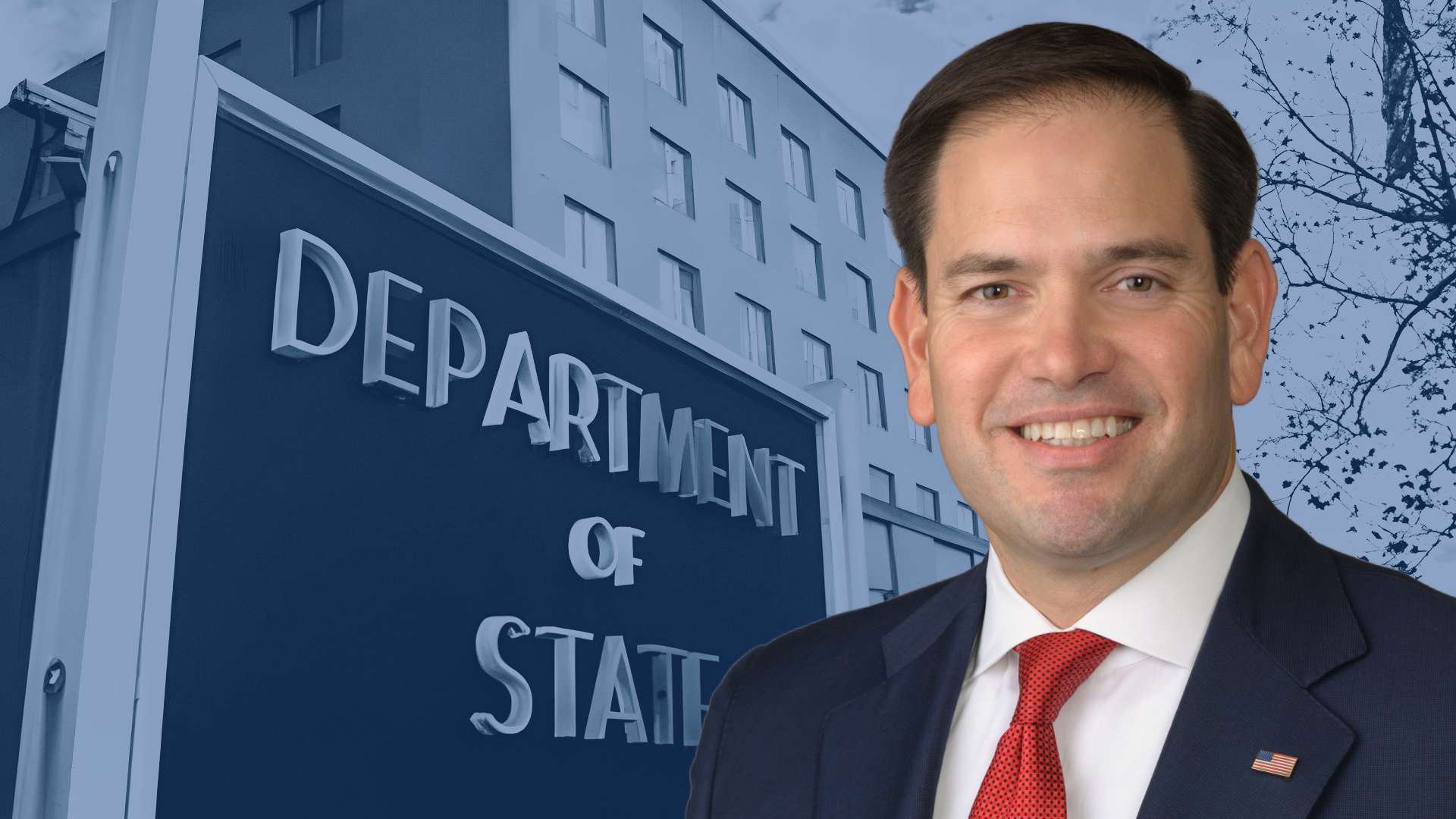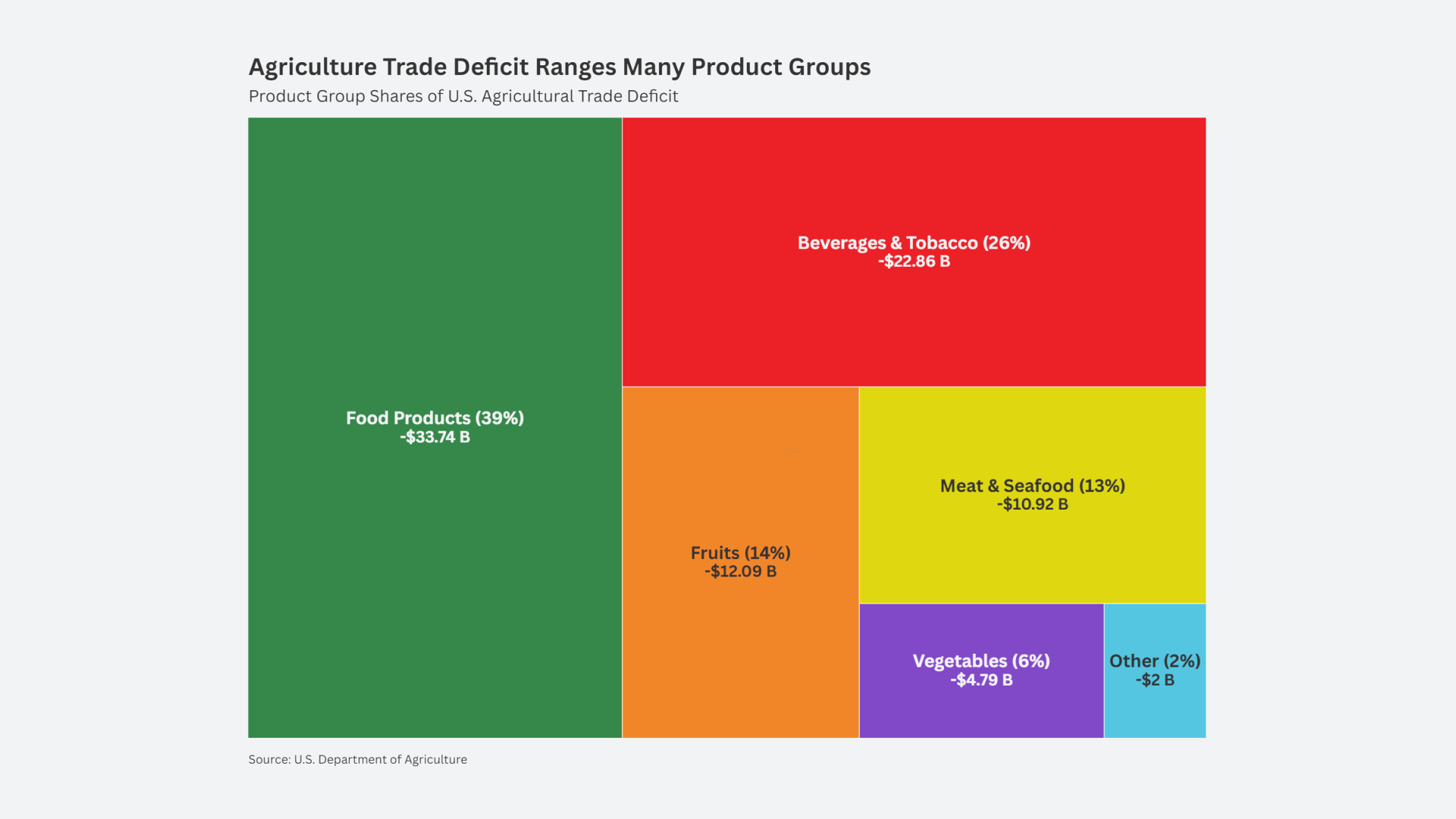By John R. Hansen, CPA Advisory Board
This note describes how a Market Access Charge (MAC) can fix US dollar overvaluation, what the MAC is, and how it would put US workers and factories back on the job.
Many factors have contributed to America’s declining international competitiveness, but most important has been misaligned exchange rates that are inconsistent with balanced trade. Other contributing problems such as inadequate investment in plant, equipment, R&D, and staff training are very real and serious, but these can be solved only when American companies are once again confident that such investments will be profitable. And in most cases, profitability can be assured only if exchange rates between the dollar and other trading partner currencies are, on average, consistent with balanced trade.
What is Dollar Overvaluation and Why is it a Core Trade and Growth Problem?
Today’s trade policies clearly do not defend America’s right to a level playing field for international trade – a fundamental requirement if America’s labor and capital resources are to be employed with maximum efficiency, and if America’s future generations are not to be burdened by foreign debts caused by today’s trade deficits.
America’s international trade policies served it well for much of the 20th century. Today, however, the policies are badly out of date because, starting in the 1970s, the market forces that determine exchange rates began to change dramatically.
Historically, the demand and supply of real imports and exports determined exchange rates, much as in the days of Adam Smith and David Ricardo. But starting about 40 years ago, world commerce has become increasingly dominated by financial trade in capital and foreign exchange. As a result, exchange rates set in today’s financial markets are rarely consistent with the rates needed to balance imports and exports. This problem is particularly severe for the United States because it consistently attracts excessive inflows of foreign capital that drive up the dollar’s value, flows driven by the following factors:
1. The U.S. dollar, which is the world’s premier reserve currency, is more widely used than any other currency for the invoicing of international transactions, for their settlement, and for storing wealth.
2. The U.S. financial markets are the largest, deepest and most liquid in the world, and they are regarded as a global safe haven in the time of financial problems – even if the problems started in the U.S. markets as happened with the Crash of 2008.
3. As the largest market in the world for consumer and industrial goods and services, America has for years been the target of currency manipulators. Countries like Germany, Japan, and China have bought billions of dollars of U.S. currency and other dollar-denominated assets with their own local currencies to drive down the value of their currencies and to drive up the dollar’s value. This has made it very difficult for American producers to compete either at home against imported products or abroad with exports.
If America’s need for foreign capital and its supply of dollar-denominated assets had no limit, the foreign demand for these assets would not cause dollar’s value to rise. But this is clearly not the case. Excess demand for the dollar and dollar-based assets drives the dollar’s exchange rate to levels that are far above the rate needed to balance U.S. imports and exports.
If America is to have an exchange rate consistent with balanced trade, it must implement policies that keep the foreign demand for dollars and dollar-based assets consistent with America’s need for imported capital.
In the short term, measures against currency manipulators and other unfair trade practices are needed. [1] For the longer term, America must restore the now-broken link between the dollar’s exchange rate and balanced U.S. trade. This can only be done by moderating net capital inflows to levels consistent with a competitive, trade-balancing exchange rate for the dollar.
The best possible way to achieve this would be a Market Access Charge (MAC). A MAC is simply a “peak load pricing” mechanism, very similar to those used around the world by both the private and public sectors to balance demand and supply for services such as airline flights, rental cars, hotel rooms, electricity use, and vehicular access to the central business districts of cities like London during rush hours. America needs a similar demand-moderating mechanism when its financial services markets are clogged with excess foreign capital.
A Market Access Charge would reduce the demand by foreigners for access to our markets under such conditions by reducing net yields by just enough to make such investments less attractive to foreign traders, speculators, and manipulators. As a result, the demand by foreigners for dollars and dollar-based assets would be moderated by just enough to reduce upward pressures on the dollar – the primary cause over time of the overvalued dollar, U.S. trade deficits, lost jobs, and failing factories.
How the MAC would Operate
The Market Access Charge (MAC) would operate as follows:
Trigger
• A non-zero U.S. trade deficit over the past 12 months (the review period) would trigger a non-zero MAC rate. [2] [3]
Rate
• An initial MAC rate of 50 basis points would be charged on the value of the incoming foreign capital once the deficit trigger point was reached.
• At the end of each review period (say every twelve months), data on the trade deficit as a percentage of GDP would be reviewed to see if the MAC charge should be increased or reduced.
• The rate would rise or fall in line with changes in the trade deficit according to an elasticity factor. For example, if the elasticity factor were set at one (1.0), an increase in the trade deficit equal to one percent of GDP over the review period would increase the MAC charge by one percentage point (100 basis points) for the following 12 months. Once the trade deficit began to fall relative to GDP, the MAC rate would decline in the same way, returning to zero once the trade deficit dropped to zero for the previous twelve months.[4]
• Transition: If the U.S. has had a cumulative trade deficit over the twelve months prior to the MAC’s effectiveness date, the initial MAC charge would be set at 50 basis points, then raised by 50 basis points every six months until the average trade deficit over the past twelve months began to decline.[5]
Base
• All capital inflows would be subject to the same MAC rate. Applying the same rate to all inflows avoids the problems of evasion, corruption, favoritism, and economic distortions that other countries like Brazil encountered with capital inflow charges when they tried to discriminate between “good” and “bad” capital inflows.
• Because the MAC is charged every time foreign capital enters the United States, a common rate for all inflows automatically discourages short-term speculative in-and-out flows. Conversely, a common rate imposes a minuscule effective burden on the life-time yields of foreign direct investments because such investments come in only once, stay for a long time, and almost always have a much higher expected rate of return per dollar invested than speculative investments do.
Administration
• The MAC would be collected automatically and electronically on all foreign capital inflows by the computer systems already present in the handful of U.S. banks that handle most of America’s cross-border financial transactions. Under traditional correspondent banking arrangements, these gateway banks would also service incoming cross-border transactions for other banks.
• Foreign investors seeking access to US financial markets would pay the Market Access Charge. The MAC is not a tax on Americans.
• The MAC charges collected would automatically by the gateway correspondent banks and electronically be transferred to the U.S. Treasury. To prevent the Government’s becoming “addicted” to MAC revenues to finance normal budgetary programs, MAC revenues would be placed in a separate “American International Competitiveness Account” (AICA).
• AICA funds could only be used for programs designed to improve the global competitiveness of American enterprises and workers. Eligible AICA programs could include, for example, the National Network for Manufacturing Innovation (NNMI), other types of support for R&D, worker training and trade adjustment assistance programs, infrastructure development, a bank for American International Competitiveness to help finance productivity-enhancing private sector investments in plant and equipment, more efficient border protection operations including antidumping and countervailing duty programs, the liquidation of foreign-held U.S. government debt, and a special fund to help offset any increased costs of borrowing to finance government operations linked to MAC charges on the purchase of government debt obligations.
In sum, a Market Access Charge (MAC) offers the best hope of providing the basis for restoring America’s international competitiveness by fixing the overvaluation of the dollar with respect to trading partners in general. The MAC would also help generate the resources needed to finance targeted countervailing currency intervention to fix the undervaluation of specific currencies caused by currency manipulation, either past or present. And to address U.S. trade problems and job losses associated with trade cheating by other countries, the MAC should be supported by parallel legislation that would increase the effectiveness of our traditional measures against trade cheating.
These policies, coupled with supporting efforts to simplify the overly complex tax code, to bring effective tax rates more into line with international standards, introduce a border-refundable VAT (at least for U.S. exports), and to bring health care costs for workers down closer to those in other advanced countries, hold the promise of generating millions of jobs, saving thousands of factories, and leaving future generations free of excessive debt caused by America’s living beyond its means today, spending more on imports than it earns producing exports.
rev. June 28, 2017
________________________________________
Notes:
[1] See for example the work of Bergsten and Gagnon at the Peterson Institute for International Economics here and here where they propose countervailing currency intervention as a way to fight currency manipulation by countries like China.
[2] The U.S. trade deficit is suggested as the key parameter triggering the MAC because it is a well-established and officially available number that directly reflects the misalignment of the dollar. Its relevance and objectivity make it far superior, for example, to debatable, subjective criteria such as the difference between the market exchange rate and the “fundamental equilibrium exchange rate,” an indicator that has been suggested as a test for currency manipulation.
[3] The MAC charge rates on incoming capital, the trade deficit trigger point level, the adjustment factor, and the review period used here to explain the MAC’s operation are all reasonable estimates of appropriate values. The actual values for these four parameters would be discussed during the legislative review process with members of the Advisory Committee on International Exchange Rate Policy mandated by Sec. 702 of the Trade Facilitation and Trade Enforcement Act of 2015 (H.R.644), experts from organizations involved in trade policy such as the Coalition for a Prosperous America (CPA), the Peterson Institute for International Economics (PIIE), the Economic Policy Institute (EPI), and others as appropriate. Once consensus was reached, these four parameters would be set into law to provide clear guidance for the Government officials responsible for implementing the MAC. The basic logic of the values suggested here is as follows:
A basic MAC charge of 50 basis points may seem too low to affect foreign capital inflows. However, this rate was chosen for several reasons:
• First, capital inflows, especially those from the private rather than the public sector, are highly sensitive to opportunities for profit and thus to relatively small changes in perspective net yields. For example, the “taper tantrum,” which was driven by the hint that the Fed might begin to raise rates by tapering off the quantitative easing program, triggered massive flows of capital from emerging market countries into the U.S.
• Second, we know from Federal Reserve experience that changes as small as 25 basis points in the policy rate can have a significant impact on capital markets.
• Third, an excessively high MAC rate could cause damaging disruptions rather than gradual adjustments in international capital markets.
The trade deficit trigger point for a non-zero MAC charge is set at zero because there is no reason that the United States should have to suffer trade deficits and the consequent loss of well-paying jobs, productive capacity that is often critical to national security, international technological leadership, and debt that future generations will have to repay in one way or another.
The adjustment factor – the elasticity or ratio of percentage point changes in the trade deficit to percentage changes in the MAC rate – is set at unity for two reasons. First, this would assure a more rapid response to rising exchange rate values and trade deficits than would a value of less than one. Second, in line with the philosophy that trade changes generated by the MAC should be constructively gradual rather than damagingly fast, a factor of unity avoids the risks associated with a higher adjustment factor such as two, which would, for example, increase the MAC charge by two percent for every one percentage point of increase in the trade deficit as a percent of GDP.
A review period of twelve months is suggested for two reasons. First, because the MAC affects the dollar’s exchange rate indirectly by moderating capital flows into U.S. financial markets rather than changing exchange rates directly by fiat or by direct government currency market intervention, a few months may be required before the dollar’s exchange rate moves by enough to even begin affecting U.S. trade balances.
Second, once the MAC begins to change the dollar’s exchange rate, two or more years may pass before trade patterns change significantly. This time is required because changing trading patterns requires buyers to complete existing contracts, find new suppliers, negotiate new contracts, and accept delivery of goods. This is true even if, as can be expected, the new suppliers are located within the United States rather than abroad.
The MAC would create a “signaling mechanism” that could change market sentiment and yield results more quickly. However, realizing the full impact of a MAC on structural trade deficits will almost certainly take three years or so.
Consequently, it would be a mistake to keep reviewing the past six months’ experience and raising the MAC charge if the desired results were not seen. Also, making adjustments in the MAC rate too frequently would increase administrative burdens, generate confusing market price signals, and risk overshooting the zero-deficit target. On the other hand, it would be a mistake to put the process on auto-pilot and wait for two or three years before reviewing the situation. Too much could go wrong in the meantime. An annual review therefore seems reasonable.
[4] Under this system, the MAC charge rate can be calculated as follows: MAC = (Deficit – Trigger) * Factor, where Deficit and Trigger are percentages of GDP and Factor is the “elasticity” of the MAC charge with respect the excess of the deficit over the trigger. Thus, when the trade deficit reached 3 percent of GDP, the MAC charge would be equal to (3%-1%) * 1.0 or 2%. An elasticity factor of 1.0 appears to represent a reasonable compromise between getting rapid results and excessively shocking the international trade system, but this is subject to further analysis and discussion.
[5] The relatively slow introduction of the MAC is designed to give the international monetary and trade system time to adjust to a new system. This gradual approach would moderate the initial impact on the countries and companies that have become addicted to America serving as the borrower and buyer of last resort in a world where supply often exceeds effective demand. The MAC’s purpose is sustainable balance through moderation, not revolutionary upheaval. While perhaps more exciting than gradual change, the latter would be a recipe for disaster in our highly integrated modern world.
John R. Hansen is an international economist with thirty years experience at the World Bank.













